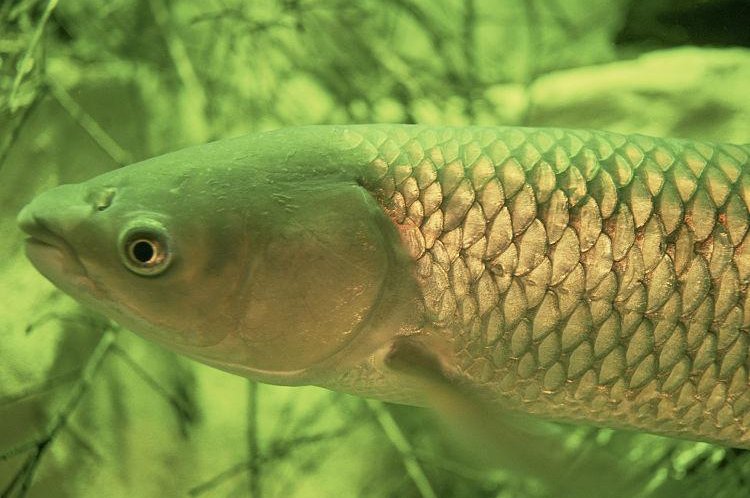A grass carp. (CC/Eric Engbretson)
(UPI) -- New research from the U.S. Geological Survey (USGS) and Bowling Green State University confirms that an invasive Asian carp species has been spawning in bodies of water that serve as tributaries for the Great Lakes.
The species, grass carp, has been breeding despite the hundreds of millions of dollars that the federal government has spent to prevent the destructive fish from reproducing.
The USGS has confirmed that four grass carp have been living in a river that flows into Lake Erie for their entire lives which suggests that it’s certainly possible that other species of carp could be living in a similar proximity to the Great Lakes. The carp that were discovered are thought to be "the result of natural reproduction within the Lake Erie basin."
“It’s bad news,” said USGS biologist Duane Chapman. “It would have been a lot easier to control these fish if they’d been limited in the number of places where they could spawn. This makes our job harder. It doesn’t make it impossible, but it makes it harder.”
"These findings are significant because they confirm recent USGS research indicating that shorter rivers, like the Sandusky, are potential spawning sites for grass carp and other Asian carps as well. The study may also provide resource managers an opportunity to address the spread of grass carp before it becomes problematic."
The Asian carp first caught the attention of conservationists by devouring plankton along the Mississippi River.
"If grass carp become abundant in Lake Erie, they may threaten native fish populations and could be detrimental to ducks, geese or other large aquatic birds," USGS wrote. "Grass carp were brought to the U.S. to control aquatic plants in the 1960s. They eat large quantities of aquatic plants, which could degrade areas important for spawning and early development of native fish."







